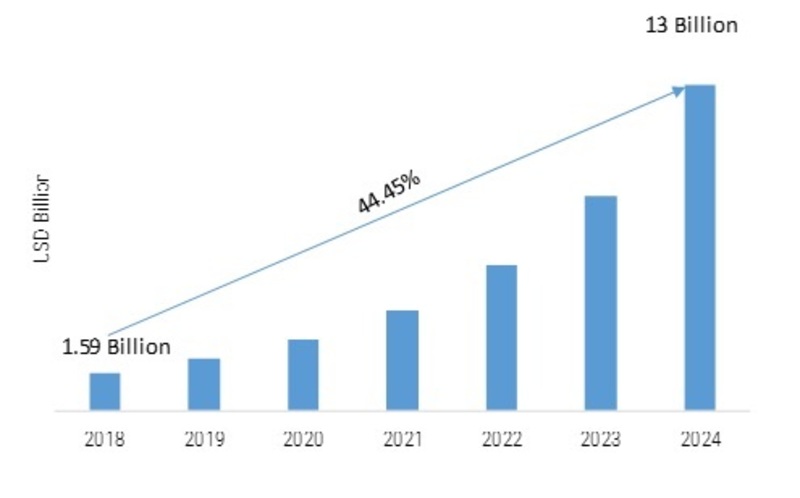Overview
Robot software is the set of coded instructions or commands that guide a mechanical device and electronic system, known as a robot, what tasks it must perform. Robot software is adopted to perform autonomous tasks. Several software systems and frameworks have been recommended to make programming robots easier. With the use of autonomous robots, human efforts to perform intricate works become more straightforward and accurate. With this, many organizations are showing eagerness and are investing in robots because of their benefits.
Some robot software is aiming at developing intelligent mechanical devices. Typical tasks include control, feedback loops, data filtering, pathfinding, locating and sharing data. While robots are usually used in structured conditions, with established and measured inputs and outputs, industrial robots are gaining impetus in recent years. Additionally, people are showcasing interest in programming and anyone with basic experience in programming wants to take advantage of the robot softwares.
To execute a specific action, robots are programmed either by piloting or by off-line softwares. Many of the industrial robots are coded by guiding a robot from a certain point to another point through the phases of an action, with each point registered in the robotic control system. Robots collect directives through computer commands, and this is referred to as manipulator level off-line software. Usage of off-line programming consists of higher-level languages, in which robotic actions are characterized by tasks or objectives. Robotic developers need to have expert knowledge of numerous kinds of programming languages and softwares, since switching from computers to robots is not as smooth a transition that developers and programmers may believe.
Request Free Sample @ https://www.marketresearchfuture.com/sample_request/7859
Different Languages of Robot Programming
Advanced-level languages can take away the burden out of developing robots and robotic softwares. They enable us to create programs with advanced operational abilities much faster and more steadfastly than humans could with one particular robot languages. Programming languages are having an insightful impact on robot incorporation in industrial machines. Today, there is no limit for robotic industrial applications since they can perform any, and every task imaginable. Robotic software plays a crucial role in performing intricate operations and certain functionalities. To start developing software in robotics, one must begin to learn different kinds of languages and softwares to make a robot work. Although robotics is a complicated subject, learning these programming languages will help a programmer how to create a project to create an easy-to-use robotic interface.
There are over 1500 programming languages across the globe, which are used to learn and execute. Learning these programming languages helps in developing a robot or securing a job in the robotics industry. But, learning C/C++ on a priority basis can also help since they are the best programming languages for robotics.
In the beginning, robots could only be developed with beginner-level languages. Early robot languages like VAL, MHI, and SIGLA were established around 1973 and were very restricted. Most communications could barely control one robot to make basic actions, which made them very rigid.
Several years have passed and technology has improved tenfold, with advancements taking place every day. Improvements have taken place in programming languages as well, enhancing them beyond imagination. People started adopting general-purpose, advanced-level languages to command their robots. C++, one of the most advanced programming languages, entered the robotics dynamics in 1982, followed by Python in 1990, and lastly, MATLAB was developed in 2012.
Even though numerous robot languages still function towards single purpose in present times, there are considerable benefits towards adopting these superior, high-level languages. For instance: These enable us to add advanced operative capabilities to a robot by merely adding an accessible software library. We can also reuse most of the codes with different robots. We can also use sophisticated debugging tools since producer-specific programming languages seldom offer tools for debugging. Resolving obstacles is rapid because many people use languages, and the community is usually beneficial. Many people feel that C and C++ are fast becoming outdated in other industries, but the deployment and recognition of these languages are increasing. Several companies prefer C and C++ to develop robots as they comprise more tools and library functions. These two languages are developer-friendly, and developers can change line by line.
Get Report Details @ https://www.marketresearchfuture.com/reports/robot-software-market-7859
LIST OF TABLES
Table 1 Robot Software Market, By Region, 2019–2024
Table 2 North America: Robot Software Market, By Country, 2019–2024
Table 3 Europe: Robot Software Market, By Country, 2019–2024
Table 4 Asia-Pacific: Robot Software Market, By Country, 2019–2024
Table 5 Rest Of The World: Robot Software Market, By Region, 2019–2024
Continued…….
LIST OF FIGURES
FIGURE 1 The Global Robot Software Market Segmentation
FIGURE 2 Forecast Methodology
FIGURE 3 Porter’s Five Forces Analysis Of The Global Robot Software Market
FIGURE 4 Value Chain/Supply Chain Of The Global Robot Software Market
FIGURE 5 Share Of The Global Robot Software Market In 2018, By Country (In %)
Continued……
About Market Research Future:
At Market Research Future (MRFR), we enable our customers to unravel the complexity of various industries through our Cooked Research Report (CRR), Half-Cooked Research Reports (HCRR), Raw Research Reports (3R), Continuous-Feed Research (CFR), and Market Research & Consulting Services.
MRFR team have supreme objective to provide the optimum quality market research and intelligence services to our clients. Our market research studies by Components, Application, Logistics and market players for global, regional, and country level market segments, enable our clients to see more, know more, and do more, which help to answer all their most important questions.
In order to stay updated with technology and work process of the industry, MRFR often plans & conducts meet with the industry experts and industrial visits for its research analyst members
Media Contact
Company Name: Market Research Future
Contact Person: Abhishek Sawant
Email: Send Email
Phone: +1 646 845 9312
Address:Market Research Future Office No. 528, Amanora Chambers Magarpatta Road, Hadapsar
City: Pune
State: Maharashtra
Country: India
Website: https://www.marketresearchfuture.com/reports/robot-software-market-7859

